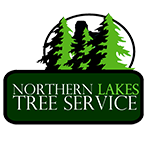Tree Safety
Essential Practices for Tree Owners
The longevity of a tree depends on various factors, including species, environmental conditions, and human influence. However, recognizing when a tree has reached the end of its lifespan due to natural wear or structural issues is critical, as failing trees can pose serious risks. Tree owners are responsible for any harm caused by tree failure, making proactive maintenance essential to protect property, community, and personal safety.
Tree Safety and Inspection: Key Practices for Tree Health
To help your trees thrive and prevent potential hazards, follow these three essential tree safety practices:
1. Comprehensive Tree Inspection
Tree inspection combines visual and structural assessment to identify potential weaknesses early. Visual inspection involves examining the tree’s external structure for visible defects, disease, or unusual growth patterns. For a more thorough inspection, drilling or specialized equipment may be used to check for internal decay or hidden damage. Together, these methods enable early detection of structural weaknesses, minimizing the risk of sudden tree failure.
2. Effective Risk Management
Effective tree risk management identifies and mitigates foreseeable risks to people and property. While homeowners may perform basic assessments, partnering with a professional tree service is strongly recommended. Certified arborists bring specialized expertise in evaluating factors that impact tree stability, such as soil health, root conditions, and overall tree health, which can help prevent accidents from falling branches or other hazards.
3. Strategic Action Planning
Strategic action planning involves creating a thoughtful approach that promotes the well-being of both trees and the community. Begin by identifying and prioritizing areas of concern based on risk levels. Decide whether you can manage specific safety tasks independently or if it’s best to enlist a professional. A well-balanced strategy allows for targeted actions that prioritize both safety and tree health.
Guidelines for Maintaining Tree Safety
-
Routine Inspections
For high-value trees (those with heritage, habitat, or aesthetic significance), frequent, detailed inspections help manage risks while preserving the tree’s benefits. Regular checks are especially vital during extreme weather seasons.
-
Value of Tree Safety
Recognize the importance of tree safety by anticipating seasonal hazards and taking steps to protect your property and neighborhood.
-
Professional Arborist Support
A certified arborist, like Northern Lakes Tree Service, can provide thorough tree inspections to assess potential risks, structural integrity, and overall health. With the expertise to identify and address both internal and external tree defects, our team will ensure comprehensive safety and preventive care.
Schedule an Expert Consultation for Your Trees Today!
Call Northern Lakes Tree Service at (208) 443-3600, or reach Damon M. Bretthauer directly at (208) 610-3718 for specialized tree safety solutions.
